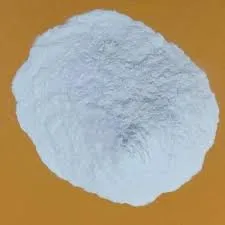
Sep . 28, 2024 22:40 Back to list
Exploring the Applications and Benefits of Hydroxypropyl Methyl Cellulose in Various Industries
Hydroxypropyl Methyl Cellulose Ether An Overview
Hydroxypropyl methylcellulose (HPMC) is a non-ionic cellulose ether widely used in various industries due to its unique properties. As a derivative of cellulose, HPMC is produced through the chemical modification of natural cellulose, enhancing its solubility, viscosity, and film-forming abilities. This versatile polymer finds applications in food, pharmaceuticals, construction, and personal care products, making it an essential ingredient in many formulations.
Hydroxypropyl Methyl Cellulose Ether An Overview
In the food industry, HPMC is used as a thickener, stabilizer, and emulsifier. It helps in improving the texture of various food products, including sauces, dressings, and baked goods. Its ability to retain moisture also makes it a valuable ingredient in products such as ice creams and dairy items, thereby enhancing shelf life and product quality. As a plant-based ingredient, HPMC is often favored in vegan and vegetarian formulations, providing a suitable alternative to animal-derived thickeners.
hydroxypropyl methyl cellulose ether

In the pharmaceutical industry, HPMC serves multiple roles, most notably as a binder and film-coating agent in tablet formulations. Its excellent film-forming properties contribute to the stability and release profile of active pharmaceutical ingredients (APIs). Additionally, HPMC is used in the preparation of controlled-release formulations, allowing for a gradual release of medication. Its non-toxic nature makes it a safe choice for various pharmaceutical applications.
The construction industry also benefits from HPMC, where it is utilized in cement-based products such as tile adhesives, grouts, and joint compounds. HPMC improves the workability and adhesion of these materials, facilitating easier application and enhancing the final product's strength. Its water-retention properties prevent premature drying of the mix, ensuring optimal performance during the curing process.
In personal care products, HPMC is employed in formulations for shampoos, gels, creams, and lotions. It helps to stabilize emulsions, enhance texture, and improve the overall aesthetic of the product. As a thickening agent, it allows for the production of luxurious, high-viscosity formulations that appeal to consumers.
In summary, hydroxypropyl methylcellulose ether is a multifunctional ingredient with a wide range of applications across various industries. Its unique properties, including solubility, viscosity, and film-forming capabilities, make it an essential component in food, pharmaceuticals, construction, and personal care products. As industries continue to seek natural and sustainable alternatives in their formulations, HPMC's plant-derived nature positions it as a preferred choice for numerous applications, contributing to both innovation and sustainability.
-
Versatile Hpmc Uses in Different Industries
NewsJun.19,2025
-
Redispersible Powder's Role in Enhancing Durability of Construction Products
NewsJun.19,2025
-
Hydroxyethyl Cellulose Applications Driving Green Industrial Processes
NewsJun.19,2025
-
Exploring Different Redispersible Polymer Powder
NewsJun.19,2025
-
Choosing the Right Mortar Bonding Agent
NewsJun.19,2025
-
Applications and Significance of China Hpmc in Modern Industries
NewsJun.19,2025







